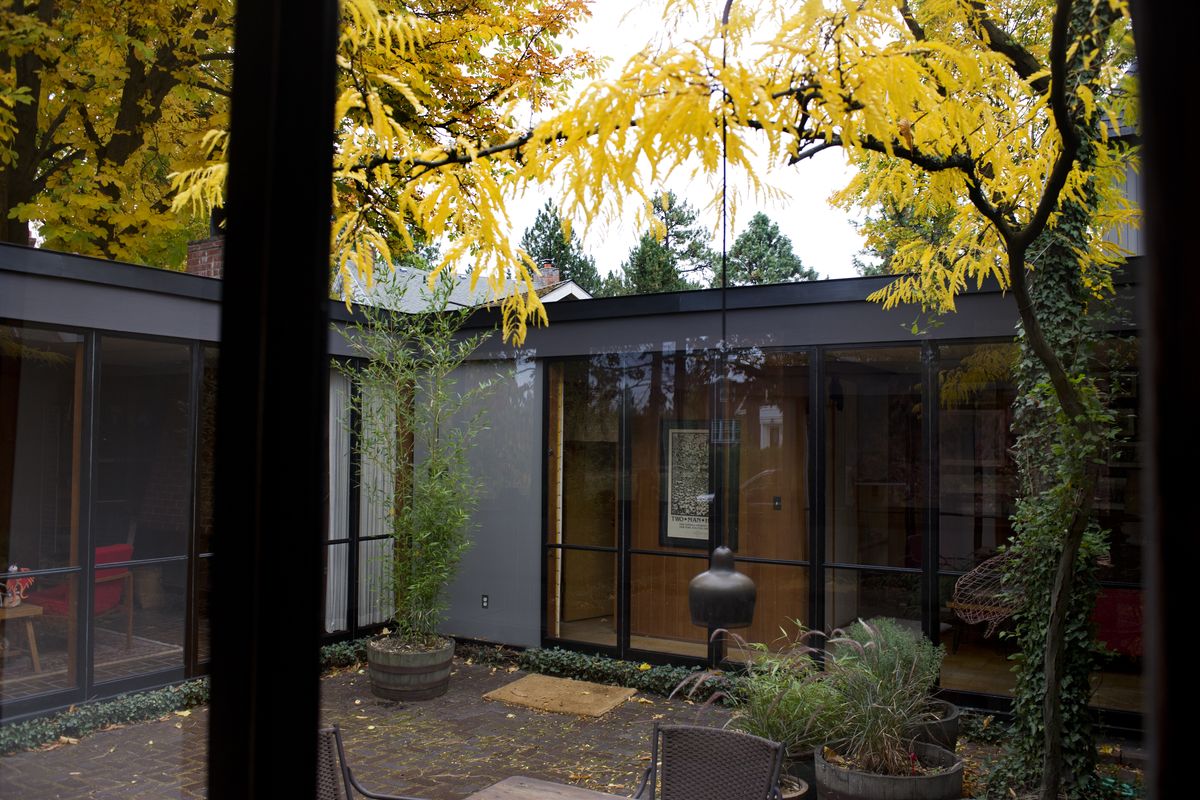10 classic homes open to public to welcome preservation group

Andy and Kris Dinnison are new to the exclusive row of century-old mansions on West Sumner Avenue.
The relatively small home that they bought last summer stands out, but not for lack of pedigree.
Built in the midcentury modern style in 1956, the acclaimed Brooks House at 723 W. Sumner Ave. is listed on the National Register of Historic Places and is within the Marycliff/Cliff Park National Historic District.
“It’s really a work of art,” Kris Dinnison said.
Members of the public will get a chance to judge for themselves in a special candlelight tour on Thursday, part of the 2012 National Preservation Conference. The conference is being held in Spokane Tuesday through Saturday.
The tour of 10 homes includes ornate and spacious mansions in a range of styles from Tudor Revival to Spanish Eclectic. The Dutch Colonial home owned by Mayor David Condon and his wife, Kristin, is one of the stops.
Nearly 1,700 registrants from around the country are expected for the conference, based at the Spokane Convention Center.
Organizers expect about 400 convention-goers to attend the home tour – a convention tradition – and they’re hoping for a strong turnout from Spokane residents not attending the convention. Proceeds from convention-goers’ tickets will go to preservation efforts of the National Trust for Historic Preservation, which is holding the convention; other ticket sales will benefit Spokane Preservation Advocates.
“It all goes back to saving places people care about,” said Valecia Crisafulli, a vice president with the National Trust.
The Dinnisons’ Brooks House is a study in contrast with many of its neighbors – smaller, simpler, stripped down.
The late Kenneth W. Brooks was a trend-setting architect in Spokane who promoted the clean lines and rectangular forms favored by the modernist movement. Among his achievements was Avista Corp.’s headquarters on East Mission Avenue in the late 1950s.
His own home shows affinity for the school of design led internationally by Mies van der Rohe, emphasizing open space, lack of ornamentation and industrial materials in construction.
From the front, the home is a low rectangle with complementary window and door openings. Its main living space is set around a square internal courtyard separated by walls of removable windows, allowing the home to be converted to open-air living during summer.
“In 1962, Better Homes & Gardens (magazine) called the idea of a courtyard a flashback from the ‘romantic past’ and praised Brooks for his glamorous design,” the home’s historic nomination says.
The Dinnisons said they moved from a 1908 home at 10th Avenue and Oak Street last summer in time to enjoy the open-air ambience of the courtyard.
“I love the courtyard. It’s amazing,” Kris Dinnison said.
The former Mead schoolteacher now spends time writing and working at Boo Radley’s and Atticus Coffee and Gifts, two shops established by her husband on Howard Street downtown.
The challenge for the Dinnisons has been to find furniture to match the period. They’ve discovered that demand in Spokane for simple midcentury designs has grown, especially among younger people.
Andy Dinnison said he is fascinated by the ingenious built-in furniture designed by Brooks, including a spare-but-functional television stand in the living room.
“He was kind of an innovator in furniture,” he said.
The house comprises the original 1956 construction, which has about 1,600 feet of space, plus a 1963 tower addition at the rear, built to add room for the growing Brooks family.
Floors are done with salt-glazed brick and cork. An unusual tilted fireplace seems to defy gravity.
“I like the clean lines and simplicity of the era,” Kris Dinnison said.
The midcentury modern style, which can be seen across Spokane in commercial buildings, churches and homes, has gained stature over the years among historic preservationists.
The Brooks House was the first home listed on the national register from that style, said Linda Yeomans, historic preservation consultant and an organizer of the tour.
“The midcentury modern tradition is coming of age now and beginning to be popular with folks,” she said.